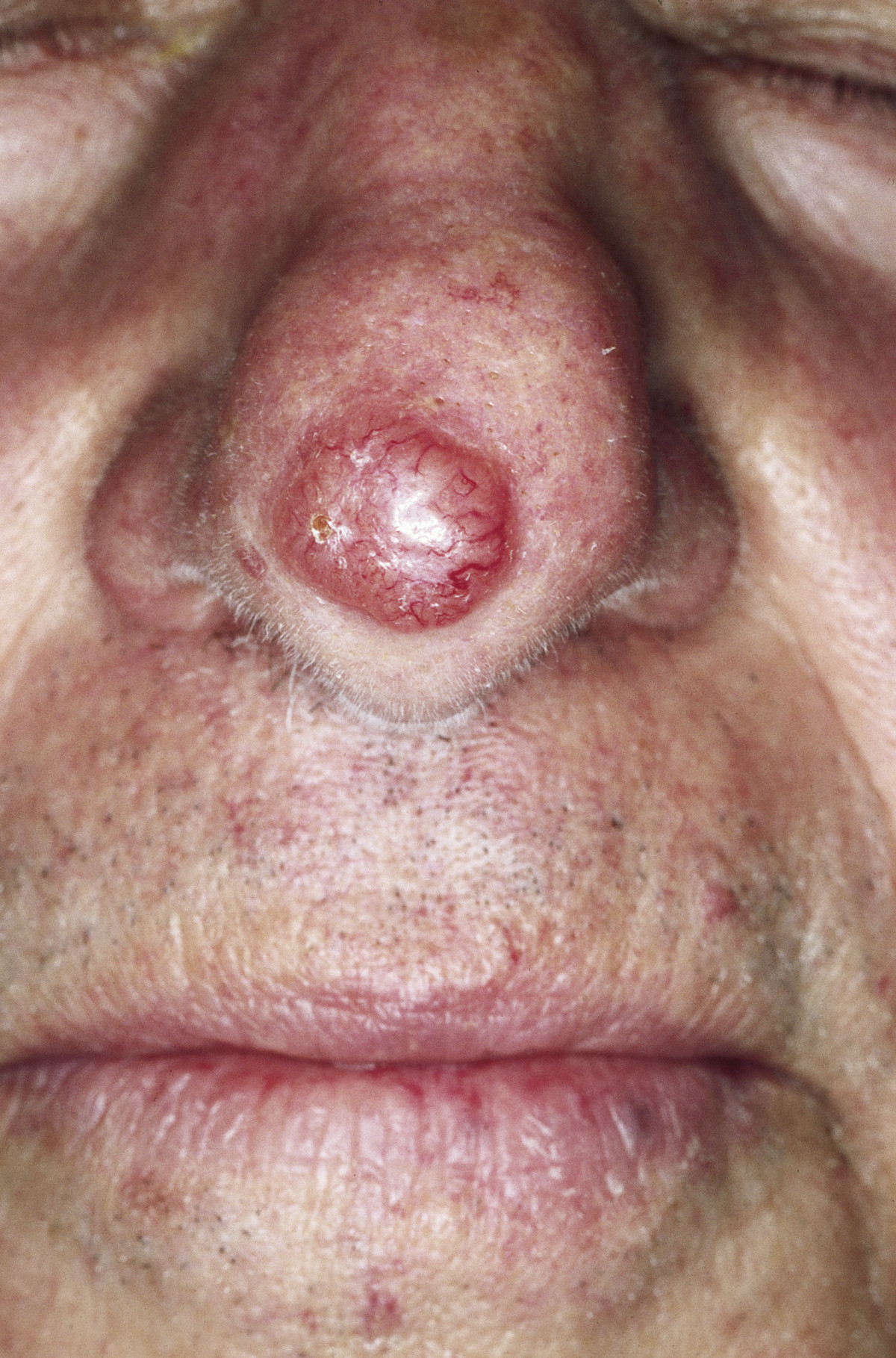Playlist
Show Playlist
Hide Playlist
Quick Review: Malignant Skin Lesions
-
Slides Dysplastic and Malignant Skin Lesions.pdf
-
Reference List Dermatology.pdf
-
Download Lecture Overview
00:02 With that, let's do a quick review. 00:04 Again, I'll ask some questions. 00:06 I'll pause after each question to allow you to reflect on the answer and then we'll go and give the answers. 00:13 First one, a 52-year-old, fair-skinned woman presents with a skin lesion on her forehead. 00:19 She has multiple rough, sandpapery patches on the forehead and dorsum of the hands. 00:25 One of those scaly patches on the forehead is associated with a firm hyperkeratotic papule. 00:32 What's the diagnosis? Great. The answer is there are multiple actinic keratoses shown here. 00:45 Again, those rough, sandpapery patches on the forehead and the dorsum of the hands, classic location for those with a single squamous cell carcinoma in situ lesion and that's that lesion that has that firm hyperkeratotic papule. 00:59 This is something which has a 3% chance of progressing to squamous cell carcinoma if we don't treat it potentially with 5-FU or imiquimod cream or cryotherapy. 01:12 Next question. 01:13 All of the following is true of a keratoacanthoma except: Number one, grows rapidly and may resolve spontaneously. 01:29 Well, we know that's true. 01:30 That's one of the classic features of a keratoacanthoma. 01:33 Number two, it is considered a pseudocancer or a low-grade malignancy. 01:39 That's also true. 01:39 The nomenclature has changed and gone back and forth but ultimately, it's clearly not an aggressive cancer. 01:46 Number three, it is nodular or dome-shaped. 01:49 That's also true. 01:50 Oftentimes, it will have that central hyperkeratotic plug that I described. 01:55 Number four, most commonly appears on the face. 01:58 That's also true. 01:59 Ninety percent of the time, you'll see them there. 02:02 Five, most important risk factor is HIV. 02:06 That's not true. 02:07 HIV is not really linked with keratoacanthomas at all. 02:10 The answer in this case is number five. 02:12 Okay, next question. 02:14 A 61-year-old Caucasian man presents with a flesh-colored papular lesion with multiple telangiectasias and rolled borders on his left cheek. 02:25 What's the diagnosis? Great. I want to make sure you come up with the right subtype here as well and it's a basal cell carcinoma specifically, the nodular subtype, similar to what our prior patient had. 02:46 One last question. 02:48 All of the following is true of a seborrheic keratosis except: Great. Number one, they're often hereditary and increase with age. 03:04 That's true. 03:06 Number two, they occur mainly in sun-exposed areas. 03:10 I don't think that's true. 03:12 They're oftentimes in areas like the chest, the upper back even on the axilla, all over the place but they don't tend to go with a predilection for sun-exposed areas. 03:23 Just to round things out though, number three, described as waxy and stuck-on. 03:28 That's a classic sort of descriptive terminology used to describe seborrheic keratosis so that part is true. 03:33 Lastly and importantly, the lesions are almost universally benign and that's true as well. 03:39 The answer to this question is number two. 03:41 They don't really occur in sun-exposed areas or at least they don't have a predilection for those areas. 03:47 With that, I think we've come to the end.
About the Lecture
The lecture Quick Review: Malignant Skin Lesions by Stephen Holt, MD, MS is from the course Neoplasms of the Skin.
Included Quiz Questions
Which of the following is true regarding squamous cell carcinoma in situ?
- It may transform into invasive squamous cell carcinoma.
- It mainly affects young, dark-skinned women.
- It presents as painful nodules.
- It appears as a painless nodule surrounded by telangiectasias.
- It is associated with nail pitting.
Which of the following is correct regarding keratoacanthoma?
- It presents as a rapidly growing, dome-shaped lesion.
- It inevitably transforms into invasive squamous cell carcinoma.
- It mainly affects the groin.
- It may be exacerbated by stress.
- It is transmitted to humans by tick bites.
Customer reviews
5,0 of 5 stars
| 5 Stars |
|
5 |
| 4 Stars |
|
0 |
| 3 Stars |
|
0 |
| 2 Stars |
|
0 |
| 1 Star |
|
0 |






